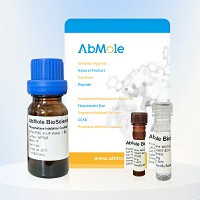
Species: Mouse/Rat
Expression system: Mammalian
Purity: > 95% as determined by reduced SDS-PAGE
Endotoxin: less than 0.001 ng/µg (0.01 EU/µg)
Molecular weight: 12.8 KDa
Lyophilized from a 0.2 μm filtered solution of 4mM HCl.
Storage and stability: The freeze-dried protein should be stored at ≤-20℃ and stored stably for one year after receiving. The recombinant protein solution can be stored at 2-8℃ for 2-7 days. The recombinant samples were stabilized at ≤-20°C for 3 months.Measured by its ability to inhibit IL-4-dependent proliferation of TF‑1 human erythroleukemic cells, the ED50 for this effect is 5-25 pg/ml.
Biological activity: Transforming growth factor β1 (TGFβ1) is the prototype of the growth superfamily of peptide growth factors, which plays an important role in a variety of cellular processes including cell cycle progression, cell differentiation, reproductive function, development, motility, adhesion, neuronal growth, bone morphogenesis, wound healing and immune monitoring. TGF-β1, TGF-β2, and TGF-β3 signals are transmitted through the same heteromer receptor complex consisting of ligands that bind to TGF-βreceptor type II (TβR-II) and TGF-βI (TβR-I). Signal transduction from receptor to nucleus is mediated by SMADs. TGF-β is expressed in cartilage, bone, teeth, muscle, heart, blood vessels, hematopoietic cells, lungs, kidneys, intestines, liver, eyes, ears, skin and nervous system.
| Solubility (25°C) | Dissolve the lyophilized protein in 4mM HCl. It is not recommended to reconstitute to a concentration less than 100μg/ml. |
| Storage | Stored at ≤ -20°C, stable for one year after receipt. |
| Species | Mouse | Rat | Rabbit | Guinea pig | Hamster | Dog |
| Weight (kg) | 0.02 | 0.15 | 1.8 | 0.4 | 0.08 | 10 |
| Body Surface Area (m2) | 0.007 | 0.025 | 0.15 | 0.05 | 0.02 | 0.5 |
| Km factor | 3 | 6 | 12 | 8 | 5 | 20 |
| Animal A (mg/kg) = Animal B (mg/kg) multiplied by | Animal B Km |
| Animal A Km |
For example, to modify the dose of Compound A used for a mouse (20 mg/kg) to a dose based on the BSA for a rat, multiply 20 mg/kg by the Km factor for a mouse and then divide by the Km factor for a rat. This calculation results in a rat equivalent dose for Compound A of 10 mg/kg.
| Related Recombinant Proteins Products |
|---|
| Recombinant Human Serpin A12 (E.coli, N-GST)
Vaspin (Visceral Adipose-Specific SERPIN) is a newly described adipokine. Vaspin is also a unique insulin sensitizing adipocytokine in obesity. |
| Recombinant Human B2M Protein (Mammalian, C-6His)
β-2-Microglobulin (B2M) is a secreted protein with 1 Ig-like C1-type (immunoglobulin-like) domain which belongs to the beta-2-microglobulin family. B2M may adopt the fibrillar configuration of amyloid in certain pathologic states. |
| Recombinant Mouse E-Selectin/CD62E Protein (HEK293)
E-selectin, also known as endothelial leukocyte adhesion molecule-1 (ELAM-1) and CD62E, is an inducible adhesion molecule that is expressed on the surfaces of stimulated vascular endothelial cells and is sometimes involved in cancer cell metastasis. |
| Recombinant Human DPP4/CD26 (Mammalian, C-6His)
DPP4/CD26 is a signal-anchor for type II membrane protein that belongs to the peptidase S9B family. DPP4/CD26 acts as a positive regulator of T-cell coactivation, by binding at least ADA, CAV1, IGF2R, and PTPRC. It’s binding to CAV1 and CARD11 induces T-cell proliferation and NF-kappa-B activation in a T-cell receptor/CD3-dependent manner. |
| Recombinant Human USP14 (E.coli, N-6His)
USP14 belongs to the ubiquitin-specific processing (USP) family which is a deubiquitinating enzyme (DUB) with His and Cys domains. USP14 acts also as a physiological inhibitor of endoplasmic reticulum-associated degradation (ERAD) under the non-stressed condition by inhibiting the degradation of unfolded endoplasmic reticulum proteins via interaction with ERN1. |


Products are for research use only. Not for human use. We do not sell to patients.
© Copyright 2010-2023 AbMole BioScience. All Rights Reserved.
